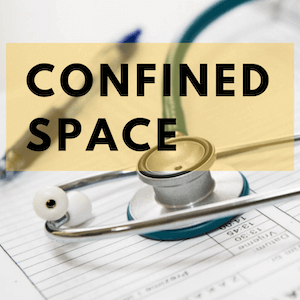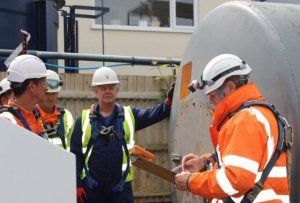
The Health and Safety Executive (HSE) defined a confined space as “a place which is substantially enclosed (though not always entirely), and where serious injury can occur from hazardous substances or conditions within the space or nearby (such as the lack of oxygen)”.
For a work area to be counted as a confined space. It must:
Confined spaces may include storage tanks, silos, enclosed drains.
Yes. As with working in other segments of the oil and gas industry, there are hazards associated with working in confined spaces. This include:
Atmospheric hazards are a significant cause of deaths in confined spaces. This is because an employer, once within a confined space, can be easily overcome due to the limited space, and exit might become extremely difficult or even impossible without help. Common gases that could result in atmospheric hazards toxic gases, inflammable gases, and high dust levels.
HSE also reports that several people suffer from injuries in confined spaces in the UK, and some even die. Hence the need for medical assessments to ascertain fitness and ensure minimal risks cannot be overemphasized.
Confined space medicals are conducted to ascertain that an individual is medically fit to work in a confined space. According to our confined space medical provider in Aberdeen the test checks for preexisting conditions that might reduce efficiency or pose a health risk to the candidate or others at work. Hence, all candidates must pass the confined space medicals before being given entry into confined spaces.
The confined space medical assessment, designed to test the suitability of individuals to work in confined spaces, usually involves the following.

Confined space medicals usually take about 50 minutes.
Working in confined spaces is a high-risk job. The medical assessment aims to determine whether or not one is fit to be exposed to the high injury risk associated with working in these spaces.

| Cookie | Duration | Description |
|---|---|---|
| cookielawinfo-checkbox-analytics | 11 months | This cookie is set by GDPR Cookie Consent plugin. The cookie is used to store the user consent for the cookies in the category "Analytics". |
| cookielawinfo-checkbox-functional | 11 months | The cookie is set by GDPR cookie consent to record the user consent for the cookies in the category "Functional". |
| cookielawinfo-checkbox-necessary | 11 months | This cookie is set by GDPR Cookie Consent plugin. The cookies is used to store the user consent for the cookies in the category "Necessary". |
| cookielawinfo-checkbox-others | 11 months | This cookie is set by GDPR Cookie Consent plugin. The cookie is used to store the user consent for the cookies in the category "Other. |
| cookielawinfo-checkbox-performance | 11 months | This cookie is set by GDPR Cookie Consent plugin. The cookie is used to store the user consent for the cookies in the category "Performance". |
| viewed_cookie_policy | 11 months | The cookie is set by the GDPR Cookie Consent plugin and is used to store whether or not user has consented to the use of cookies. It does not store any personal data. |